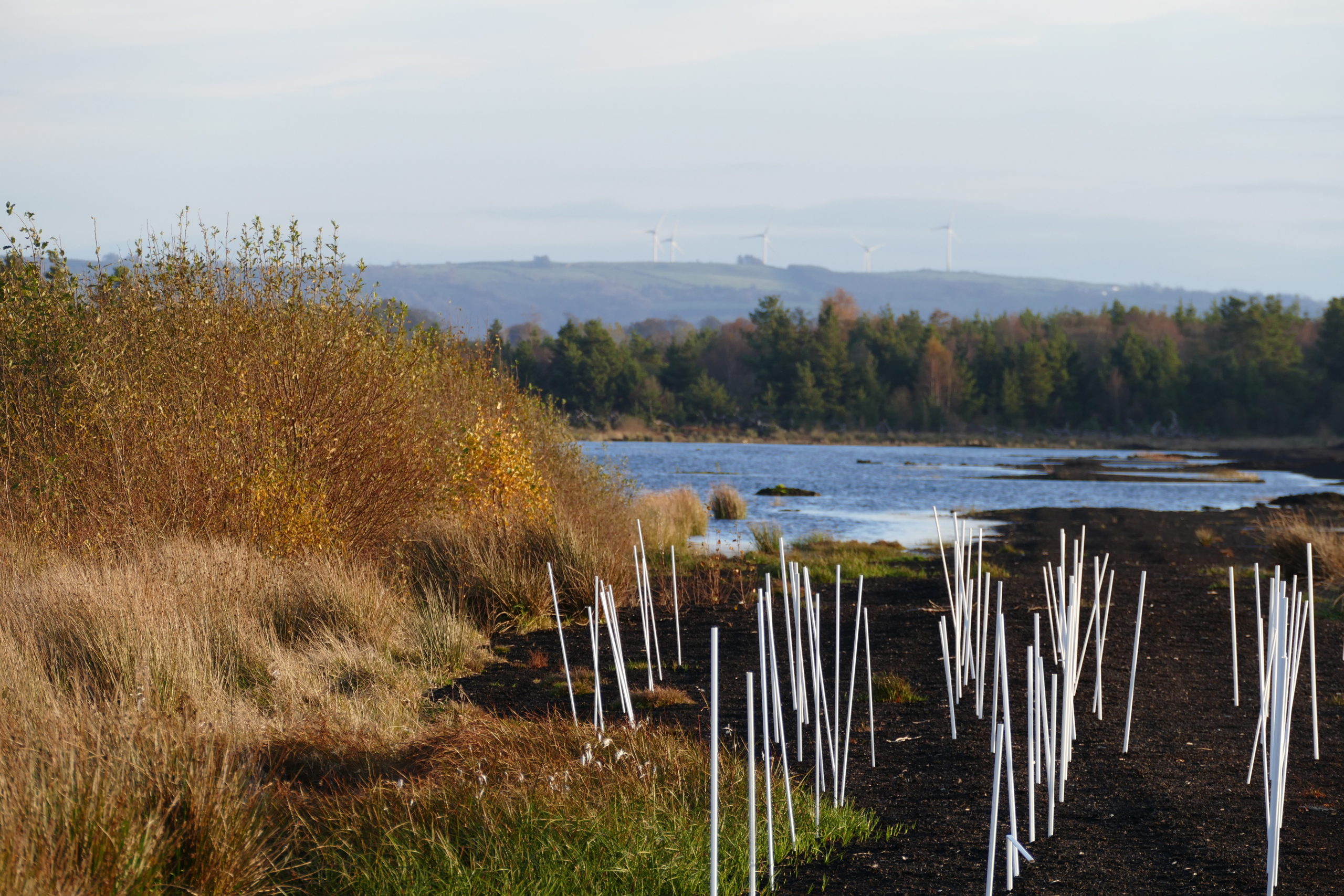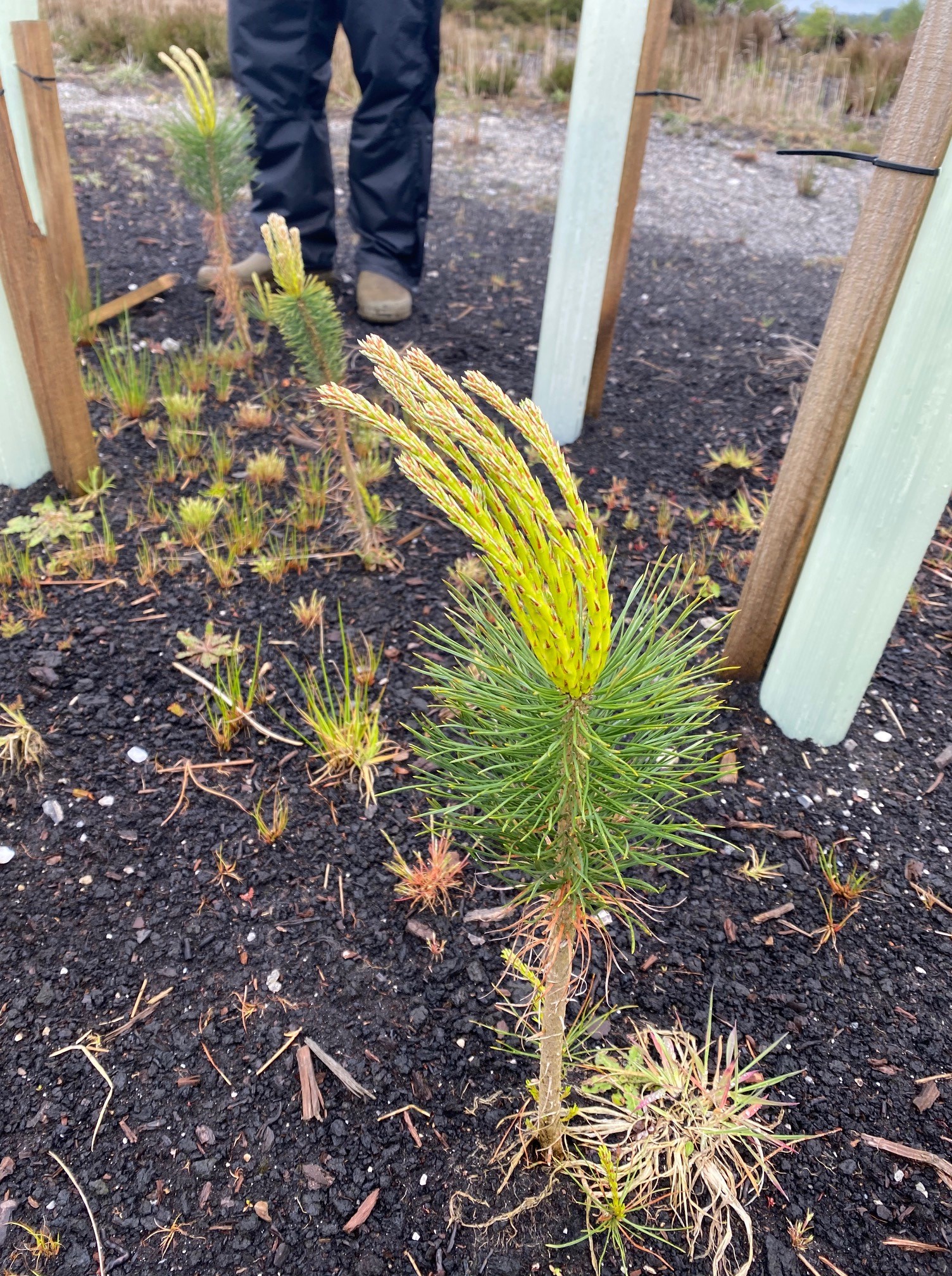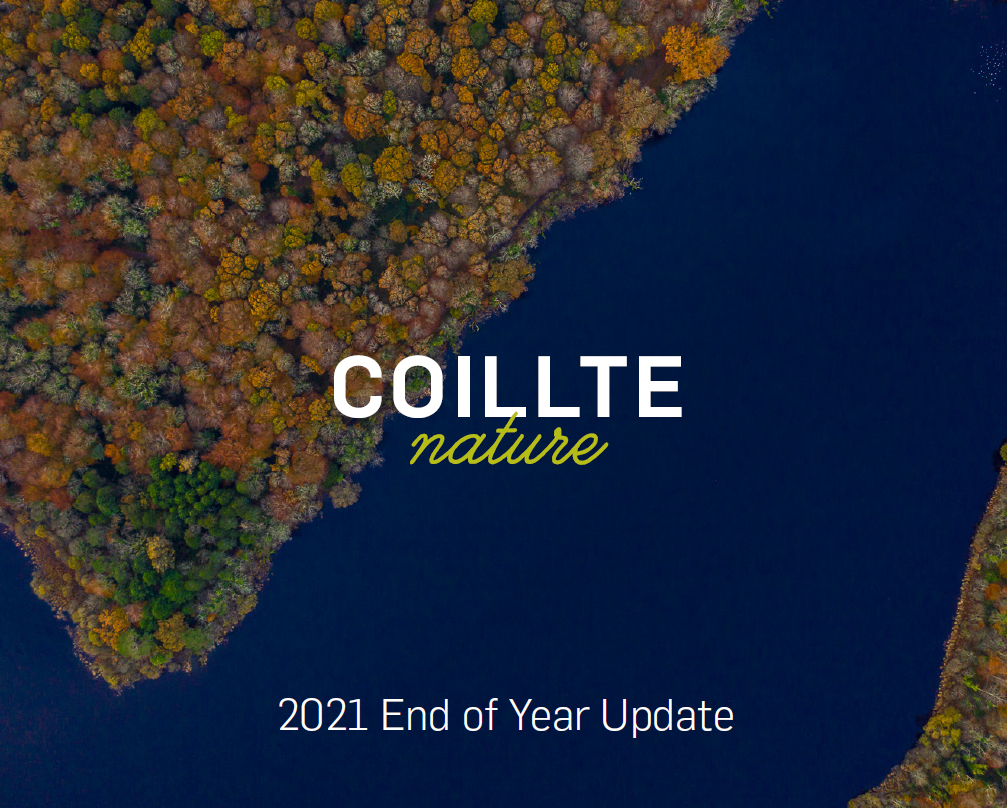Midlands Native Woodland Summer Update
‘Baunmore has changed significantly since peat extraction stopped in 2017’ said Dr Mark McCorry, Head of Ecology and Bog Rehabilitation at Bord na Móna, who recently visited the site with the Coillte Nature Team. ‘Areas that were formerly harvested are now quickly colonising with bog cotton, sedges and other species, and the re-wetting has been particularly effective.’
‘The Coillte and Bord na Móna Midlands Native Woodland Project will have significant benefits in establishing and diversifying native woodland in the drier areas of this site, benefiting the overall biodiversity value’ adds Mark. ‘The tree planting trials are coming on well and it is great to see species like Scots pine flourishing in places.’
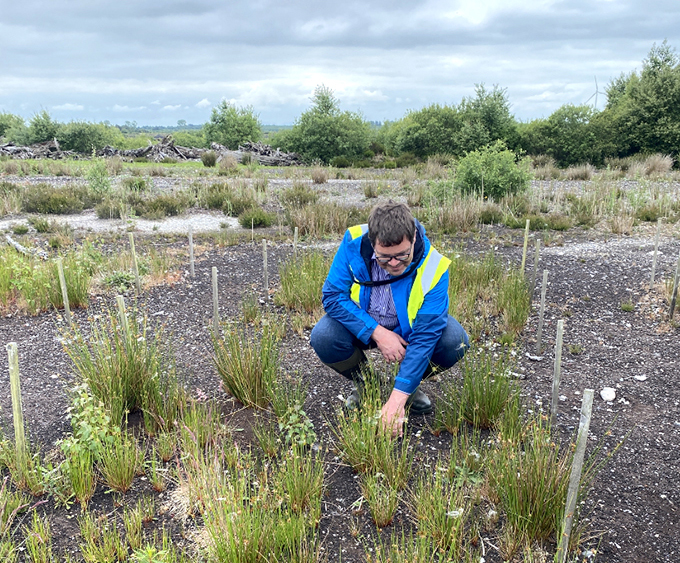
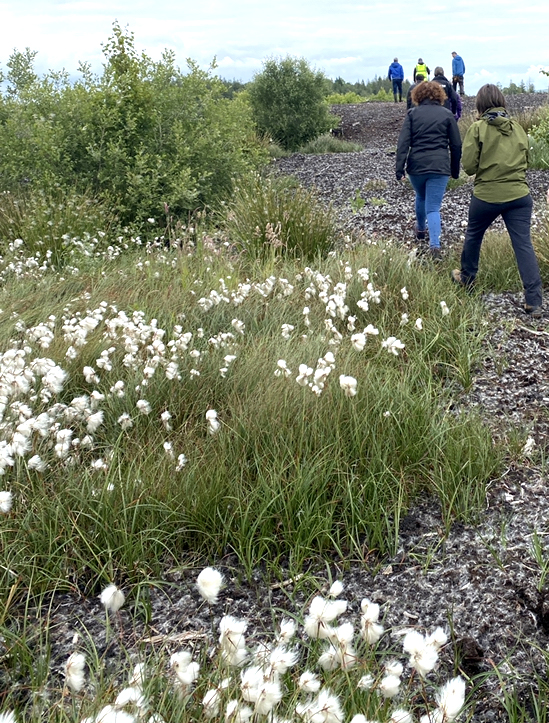
The Midlands Native Woodland project is a collaboration between Coillte and Bord na Móna to establish native pioneer woodland on sections of the Littleton Bog Complex, including parts of the Baunmore site. The majority of these sites are in the process of being rewetted, but on higher and dryer sections of the cutaway bog, which cannot be rewet, Coillte Nature will establish areas of native trees and shrubs.
The aim is to speed up the regeneration process and stabilise the bare peat, in order to reduce soil (peat) erosion and CO2 emissions. Natural regeneration is taking place already on some parts of these sites, but it is a harsh environment, and surface layers of peat are being continuously eroded due to strong winds, rain and a lack of vegetation cover. Without this intervention it would take decades longer for this site to become a thriving habitat once again.
Taking our lead from the natural woodland regeneration that is occurring presently on parts of the site, over 100 trial plots with birch, alder, Scots pine, oak and rowan have been seeded and planted since 2020 to inform the best approach for afforesting this and similar sites. Despite the harsh conditions in this exposed environment, the tree trials on the shallow and medium depth peats have been very successful.
You might remember from our post back in December that we also sowed acorns and planted test plots of oak saplings. This was done on areas of shallow and medium peat depths, to partly mimic a type of oak woodland sometimes found on eskers running through Raised bog landscapes. Both the saplings and seedlings have done well, as you can see from the picture.
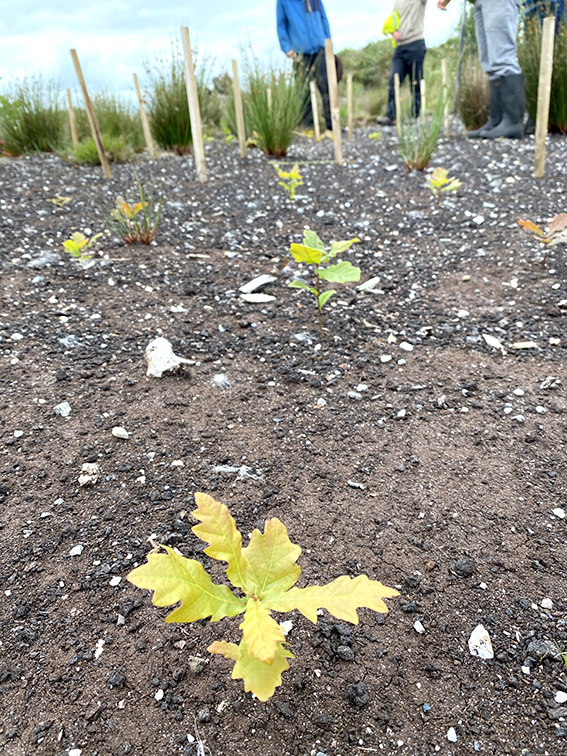
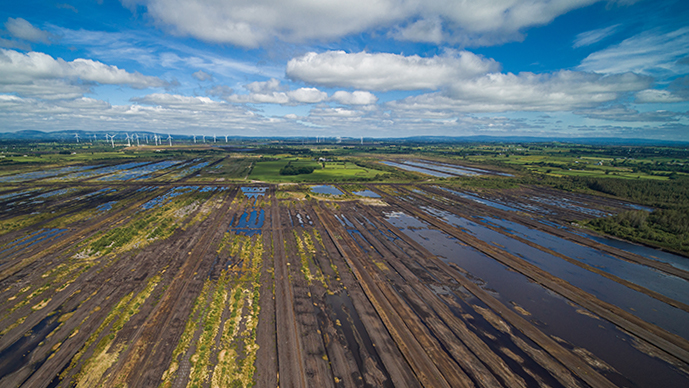
A Form 1 Afforestation Application for just over 200 hectares (about 5% of the total site area) was submitted to the Department of Agriculture, Food and the Marine along with an Environmental Impact Assessment (EIA) report and a Natura Impact Statement (NIS). You can learn more about our trials in our earlier blogs and on our Midland Native Woodland project web page here.
